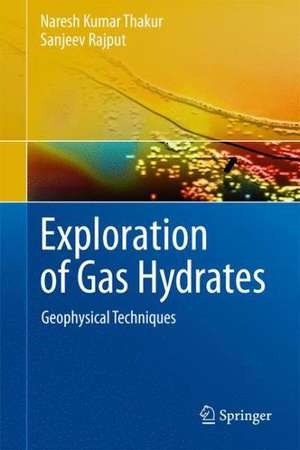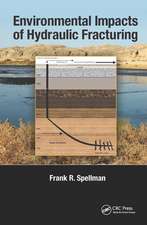Exploration of Gas Hydrates: Geophysical Techniques
Autor Naresh Kumar Thakur, Sanjeev Rajputen Limba Engleză Hardback – 9 oct 2010
| Toate formatele și edițiile | Preț | Express |
|---|---|---|
| Paperback (1) | 640.24 lei 6-8 săpt. | |
| Springer Berlin, Heidelberg – 23 aug 2016 | 640.24 lei 6-8 săpt. | |
| Hardback (1) | 645.79 lei 6-8 săpt. | |
| Springer Berlin, Heidelberg – 9 oct 2010 | 645.79 lei 6-8 săpt. |
Preț: 645.79 lei
Preț vechi: 759.76 lei
-15% Nou
Puncte Express: 969
Preț estimativ în valută:
123.59€ • 134.20$ • 103.81£
123.59€ • 134.20$ • 103.81£
Carte tipărită la comandă
Livrare economică 22 aprilie-06 mai
Preluare comenzi: 021 569.72.76
Specificații
ISBN-13: 9783642142338
ISBN-10: 3642142338
Pagini: 292
Ilustrații: X, 281 p.
Dimensiuni: 155 x 235 x 24 mm
Greutate: 0.57 kg
Ediția:2011
Editura: Springer Berlin, Heidelberg
Colecția Springer
Locul publicării:Berlin, Heidelberg, Germany
ISBN-10: 3642142338
Pagini: 292
Ilustrații: X, 281 p.
Dimensiuni: 155 x 235 x 24 mm
Greutate: 0.57 kg
Ediția:2011
Editura: Springer Berlin, Heidelberg
Colecția Springer
Locul publicării:Berlin, Heidelberg, Germany
Public țintă
ResearchCuprins
Introduction: Importance of different forms of energy, renewable, non-renewable, efficiencies of all energies.- Oil & Gas scenario.- Alternatives. Heavy Oil. Coal Bed Methane. Hydrogen. Hydrates. Others.- Gas hydrates. What are gas hydrates. Structure. Shape and forms.- Stability conditions. Availability of methane. Pressure and Temperature conditions. Water chemistry. Higher hydrocarbons.- Geological indicators. Geophysical surveys. Geophysical processing. Geophysical indicators. Bottom Simulating Reflectors. Top of the hydrates (Gradational boundary). Attenuation. Shear waves (P-S conversion). Velocity.- Quantification of gas hydrates. Seismic Attributes. Reflection coefficient. Blanking. Velocity. Amplitude versus Offset. Modelling. Inversion. Rock Physics.- The Road Ahead.- Organization of the book
Textul de pe ultima copertă
Gas hydrates are ice-like crystalline substances that form a rigid cage of water molecules and entrap hydrocarbon and non-hydrocarbon gas by hydrogen bonding. Natural gas hydrate is primarily composed of water and methane. These are solid, crystalline, ice-like substances found in permafrost areas and deepwater basins around the world. They naturally occur in the pore space of marine sediments, where appropriate high pressure and low temperature conditions exist in an adequate supply of gas (mainly methane). Gas hydrates are considered as a potential non conventional energy resource. Methane hydrates are also recognized as, an influence on offshore platform stability, a major factor in climate change contributing to global warming and a significant contribution to the ocean carbon cycle. The proposed book treats various geophysical techniques in order to quantify the gas hydrate reserves and their impact on environment. The primary goal of this book is to provide the state of art for gas hydrate exploration. The target audiences for this book are non-specialist from different branches of science, graduate students and researchers.
Caracteristici
Provides state of the art for gas hydrate exploration Treats various geophysical techniques in order to qualify gas hydrates reserves Interdisciplinary approach Includes supplementary material: sn.pub/extras














